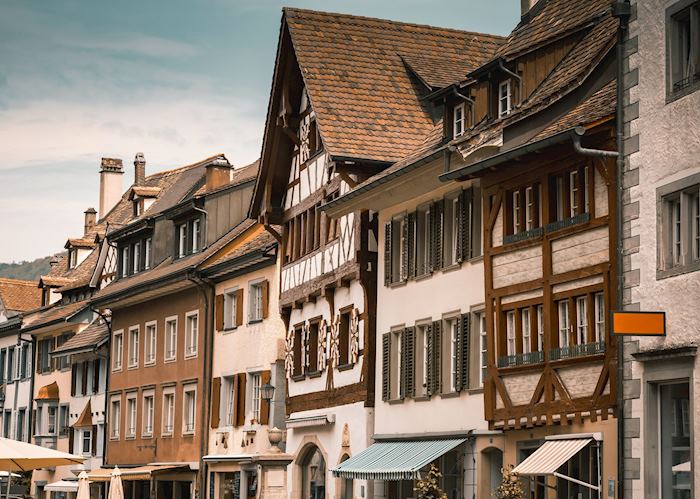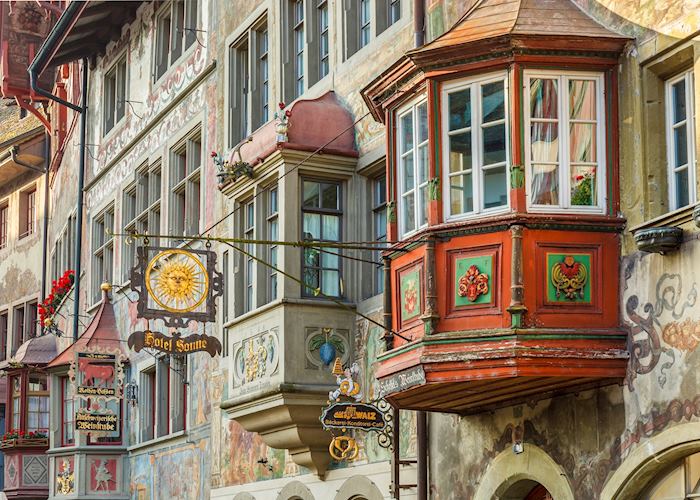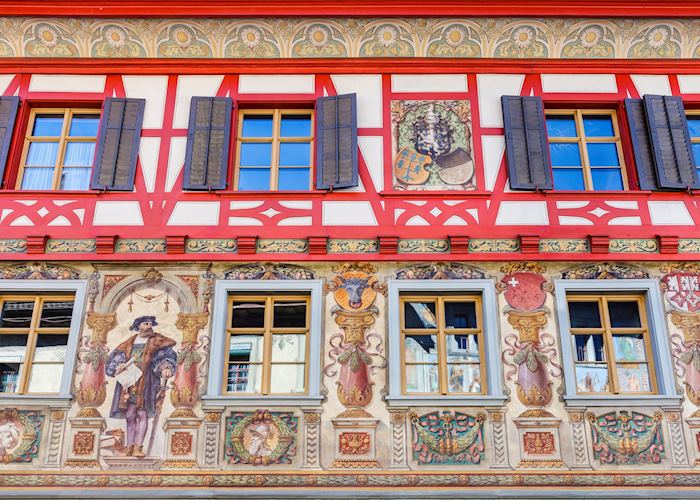Step into a 360-degree medieval painting in Stein am Rhein. In this historic town, traditional half-timbered structures are decorated with intricately detailed paintings surrounding the main square. In this self-guided tour, you’ll head by train to the banks of the Rhine River and immerse yourself in this impressive display of 16th-century art, most of it by a single artist.
The old town still looks much as it did in the 1500s, when the monks of Saint George’s Abbey successfully transformed the little fishing village into a stop on a commercially successful trade route.
While the town’s heart has the greatest concentration of painted buildings, the sense of going back in time continues as you walk the streets out from the square, where the multi-level, many-hued medieval buildings are enlivened by the modern caf茅s, restaurants and other businesses operating out of them.
You can walk along the waterfront for picture-postcard views, then explore the narrow streets for a more immersive experience.
For this self-guided tour, you’ll begin your journey in Zürich, boarding a train from the Hauptbahnhof toward Stein am Rhein, a painstakingly preserved medieval town straddling the banks of the Rhine River. Known for its distinctive building façades, the old town boasts a collection of half-timbered homes with vividly painted frescoes.
The old town, enclosed within the historical walls, retains its original medieval street layout, and the most impressive buildings are all clustered in the Rathausplatz, the town square. Walk along the river for the best view of the overall town, then head across the bridge into the maze of cobblestone streets and intricate artwork.
The paintings depict Biblical stories, everyday scenes and expressions of the businesses housed in the buildings and were mostly done by German painter Thomas Schmede between 1520 and 1525. Taken as a whole, the old town of Stein am Rhein forms one of the world’s largest displays of street art.
Notably rare in Europe for its concentration of historic buildings within a small area, Stein am Rhein was granted the first Wakker Prize for preservation of architectural heritage in 1972. Besides the old town, Stein am Rhein offers several other sites of historical interest, including the comparatively plain Saint George’s Abbey, a well-preserved medieval monastery complex on the riverbank. The abbey was moved to the small village on the river in 1007 by order of the Emperor Henry II, and its monks were largely responsible for the commercial development of the town.
High above the riverside town looms Hohenklingen Castle, which was built in 1225 as a residence and later a fortification during the 30 Years War. If you’re up for a climb, venture up the hill to visit the fortress and get panoramic views of the town and the river below.
You may return to Zürich in your own time — the train tends to take about an hour and a half.




